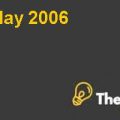
Development of a Renewable Energy Calculator Case Solution
Introduction
1.1 Background
In the past, we know that other resources and their quantity like petroleum, natural gas and coal declining rapidly, interest in the utilization of renewable energy sources have increased dramatically. In technological terminology, renewable energy is used to convert natural resources to the power so that they can be utilized and the energy is delivered into domestic or industrial regions. These technologies have been well established in the form of water heat devices, solar cells, wind turbines, ground pumps etc.
Figure 1-1: Electricity Generated (Eurostat/Statistics Explained, 2015)
Solar panel provides more dramatic growth of generation of electricity, rising from just 0.4 TWh in 2003 to overtake geothermal energy in 2008 to reach a level of 85.3 TWh in 2013. As the conclusion 27% of the energy was produced from the renewable sources..
1.2 Renewable Energy: Current Status
Nowadays, most of the industries and houses are now dependent on the use of large quantity of energy and many of them now using renewable resources, most of which comes in the form of various renewable energies, such as solar energy, wind, ocean energy, biomass etc. The majority of renewable energies are derived from solar radiation, A water heating device can easily convert solar radiation to heat directly; photovoltaic technology, which is also based on the use of solar energy, It is designed to convert solar energy to electric power; more than 20,000 wind turbines are in use around the world for generating electricity.
1.3 Aim of the report
The purpose of this research report is tocreate an intelligent computing device i.e. a Calculator, providing a useful suggestion for end-users;selection of the best suitable renewable energy system fora particular area. In order to complete this purpose, there are three main objectives that are discussed and completed in this thesis. First objective for the user is to input the different parameters the second objective is to create intelligent interfaces for four different renewable systems for users to calculate renewable results; and the third and final objective is to give appropriate results and help to decide the user to choose a renewable system.
Chapter 2
Literature Review
Renewable energy is the kind of energy that can be collected or regenerated in the short term, including solar energy, wind energy, biomass, geothermal energy, ocean energy etc
2.1 Solar Energy
2.1.1 Introduction
Nowadays, with the climate of increasing energy needs and more environmental concerns, using an alternative renewable energy to replace non-renewable and polluting fossil fuels has become inevitable. Solar energy is one of the alternative options for this. Solar energy is renewable energy which can be produced directly by the sun and can be easily collected by suitable equipment. There are three types of applications of solar energy used today: flat-plate collectors, photovoltaic cells and passive collectors...........
This is just a sample partial case solution. Please place the order on the website to order your own originally done case solution.













